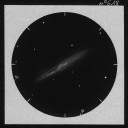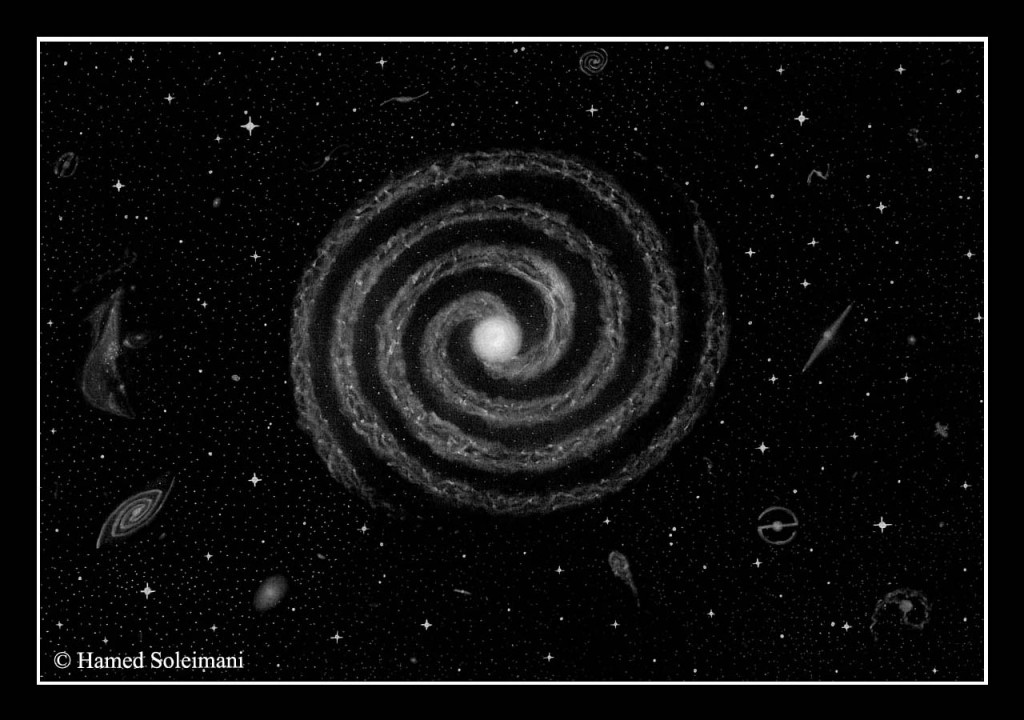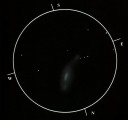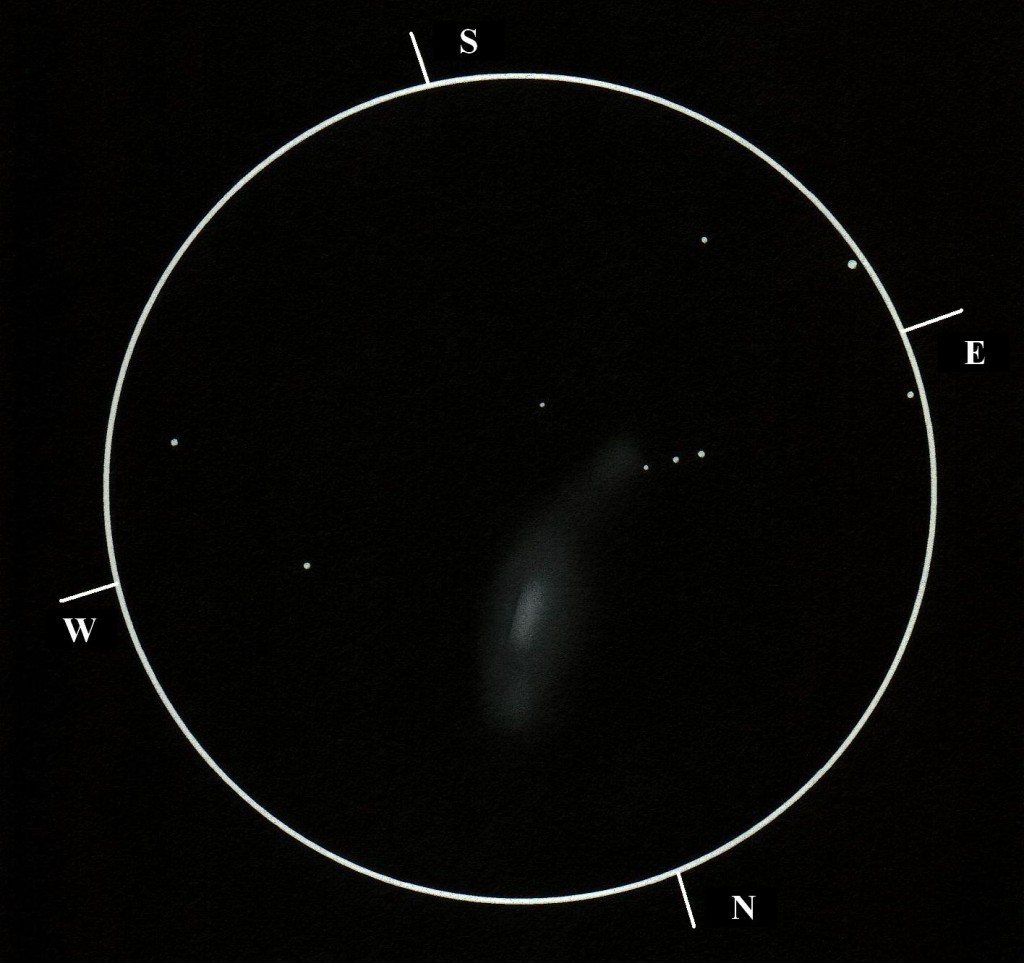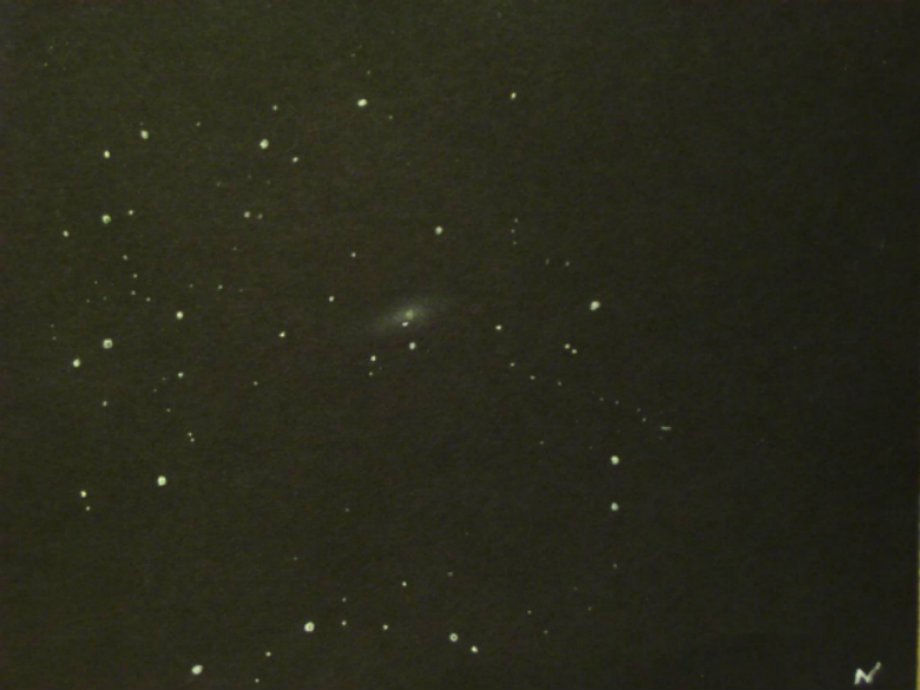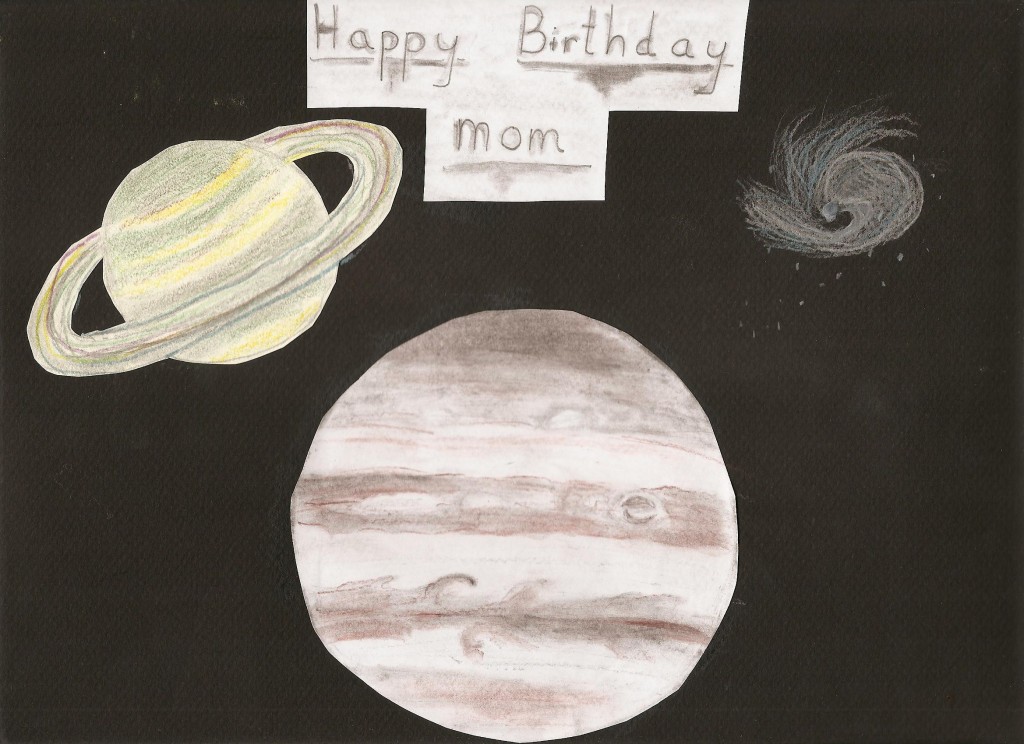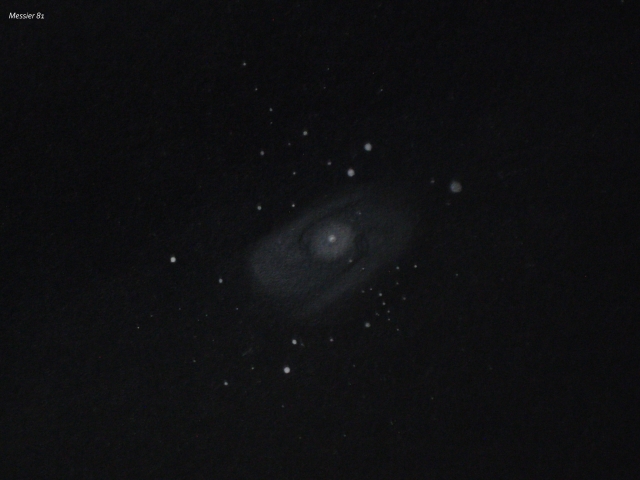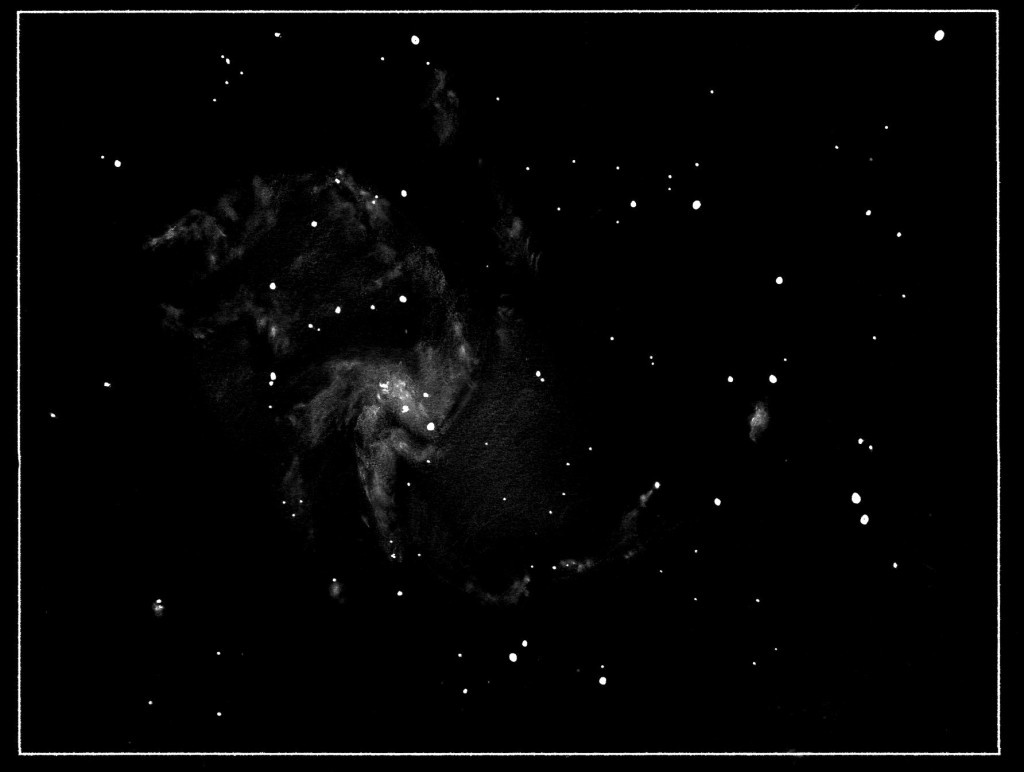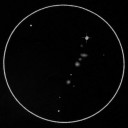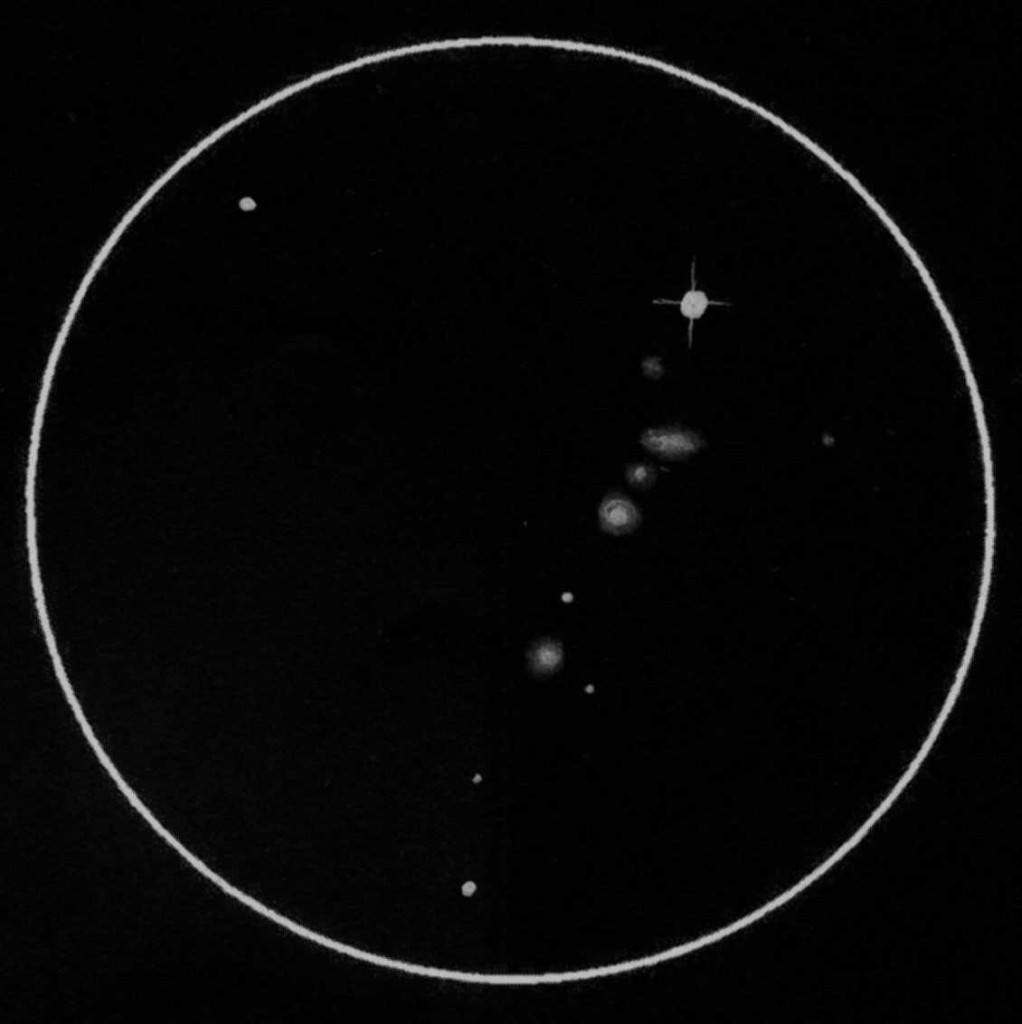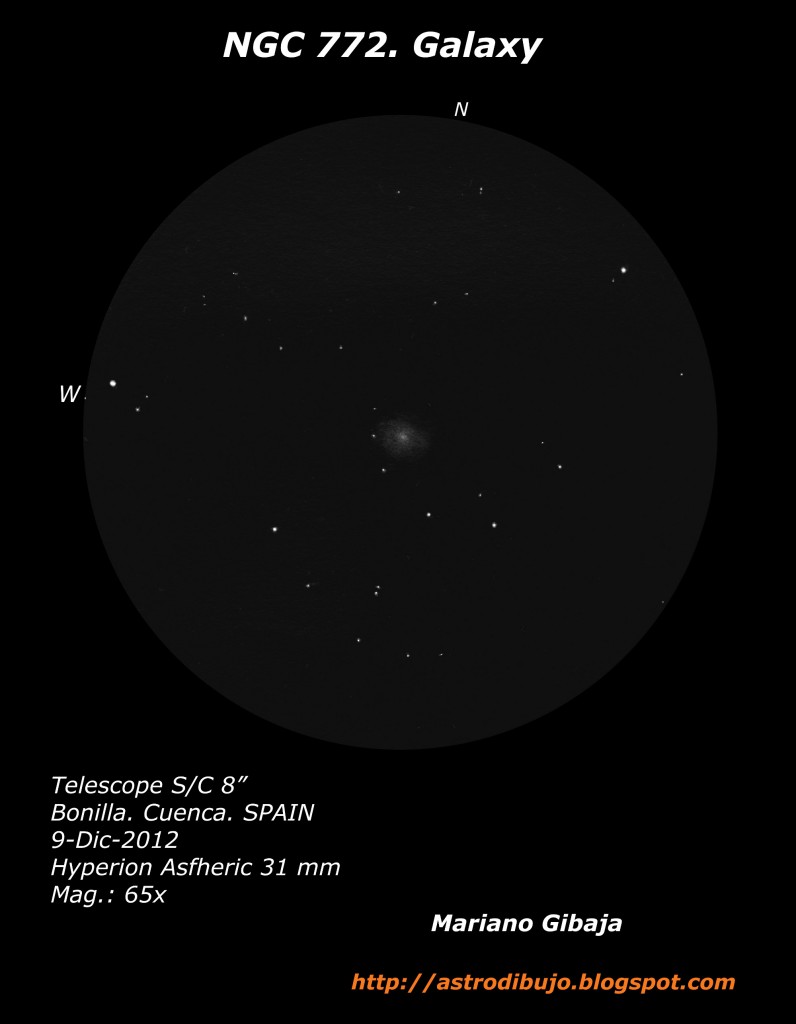
Object Name: NGC 3079 (UMa)
Object Type: Barred spiral galaxy – edge-on view
Location: Hombeek, Belgium
Date: 14th March 2013
Conditions: Clear transparant sky – seeing 2/5 ant. , NELM 5.7 (UMi method)
Optics: Celesctron CGEM1100 (SCT 11” f/10), Hyperion 10mm (280x), FOV 15arcm
Media: Graphite pencil on white paper, inverted scanning
Notes: This observation was made during one of the few clear nights of the past winter period with tempertaures dropping to minus 10°C. Galaxy NGC3079 is one of the better objects in the Hershel 400 list and was at first impression quite difficult to see with diffuse and faint impression. When using averted vision the object displays a richdom in details with an overall flocky appearance, 6:1 elongated and a faint irregular core that extends to the north in a triangular brightening. The southern core area is very flocky. Two bright areas are clearly visible on both sides of the core, of which the detail in northern area is more explicit, sharply defined with a darker area towards the east and resembling a second core. A real nice object!
Clear skies,
Tom Corstjens
